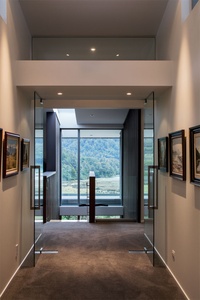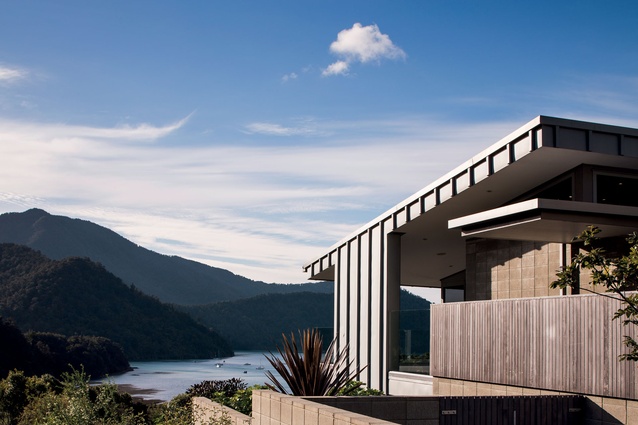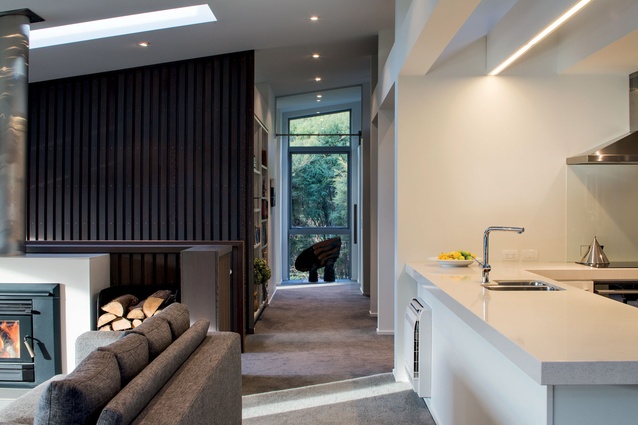Houses revisited: Tennyson Inlet house
Long and short – elongated forms help knit this house to its site. First published in 2014.
Nestled into a lush, north-facing slope overlooking the secluded waterways of Tennyson Inlet in the Marlborough Sounds, is a quiet retreat combining modern and comfortable elegance with low environmental impact. The intricate maze of sea-drowned valleys at the north end of the South Island offers some of the most exquisite scenery in the country, but also the challenge of how to build in such a way as to give full access to those marvellous views without detracting from them with overt human intrusion into the pristine natural beauty.

While the house has road access, it remains a remote site and required a unique design to allow construction and provide a discrete, environmentally responsive solution.
Designed by Nelson-based Irving Smith Jack Architects and taking a leaf from Frank Lloyd Wright that a house shouldn’t be on the hill, but rather of the hill, the elongated forms integrate the house into the bush environment, presenting the appearance of a single level in keeping with the community standards of the nearby village and offering abundant views. This project was managed by partner Andrew Irving. The firm knows the region well with an intimate focus on Marlborough, the Sounds, Nelson and Tasman and Golden Bays, but with a reputation throughout New Zealand and overseas.
A robust outer shell of plain zinc cladding addresses the high local rainfall and strong northerly and southerly winds while the blockwork walls anchor the structure to the site. An inner skin of oiled cedar cladding and double glazing creates a cosy, chic and uncluttered interior space. The external timberwork is repeated internally in the stairs, heart and entryway to unite inside with outside. The simplicity of the materials and the utilitarian architectural vernacular connote the house’s bach whakapapa, but the cleverness of the design solutions and the careful sensitivity to aesthetic sensibilities create a sense of unfussy sophistication. There is all the getting away from the rat race for some casual relaxation in the majestic splendour of nature, but no roughing it either.
The volumes of the house are organised around a cruciform layout with service, garage and workshop areas clustered at the southern end, bisected by a circulation route and stairwell to the upper single-level apartment with indoor and outdoor space for a retired couple in permanent residence. The master bedroom, office and ensuite are positioned to the east of the building to take full advantage of the morning sun and verdant bush views. The living spaces of the house radiate out from the central kitchen, lit and ventilated by clerestory windows. The lower floor provides a comfortable space for visiting extended family to live independently during the summer months, and when they decamp home again the dwelling reverts to a single level apartment once more.
The end result speaks for itself; a property that capably straddles holiday home and permanent residence, rustic charm and urbane polish, modernism, lifestyle, relaxation and comfortable simplicity. It is a slice of heaven at the top of the south.
Click here to see more Houses Revisited. And sign up to our email newsletters to receive Houses Revisited straight to your inbox.
Note: These are stories from our archives and, since the time of writing, some details may have changed including names, personnel of specific firms, registration status, etc.















